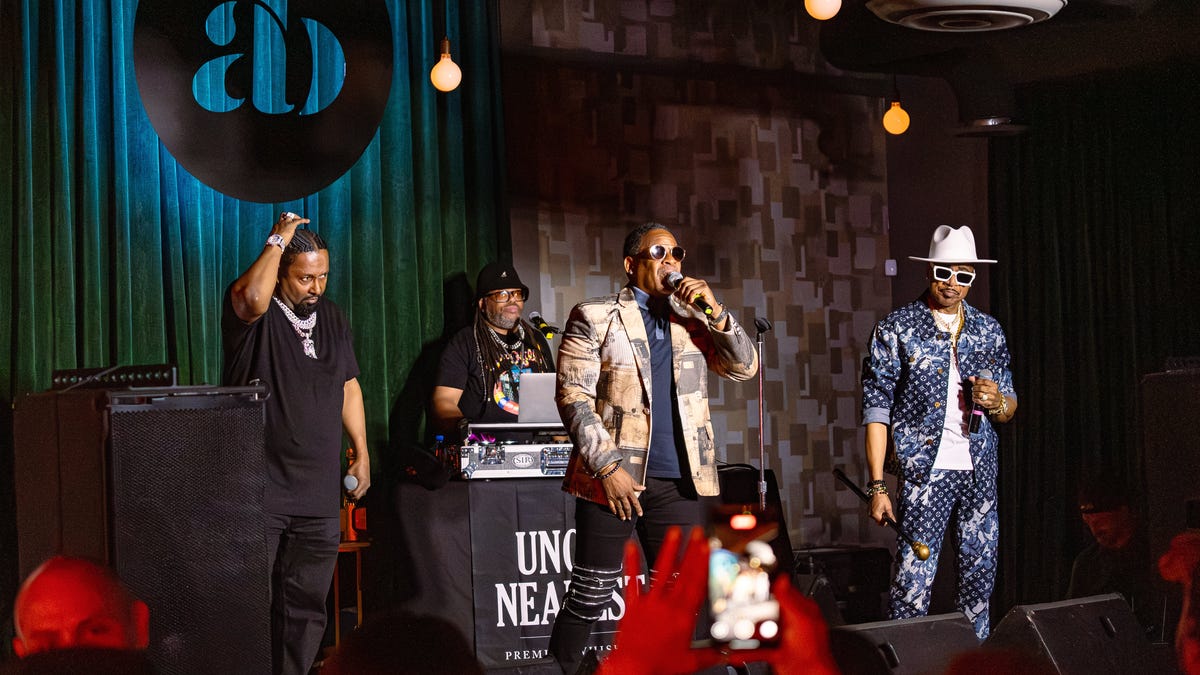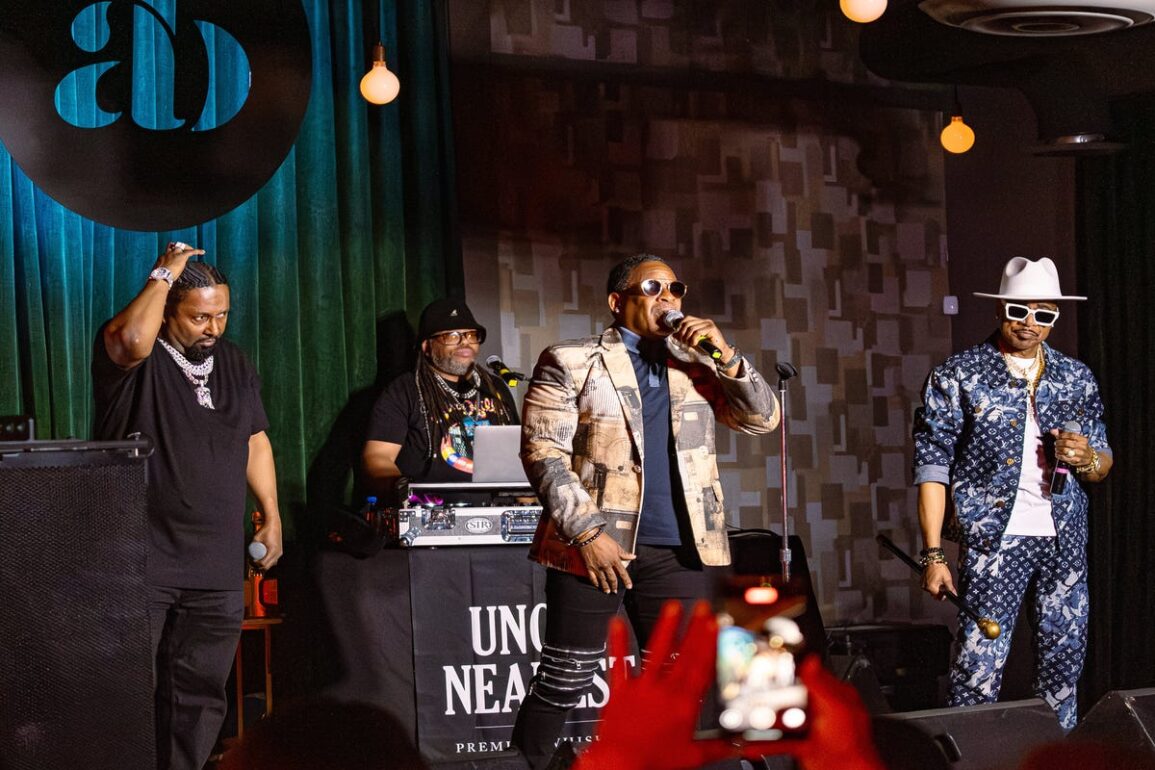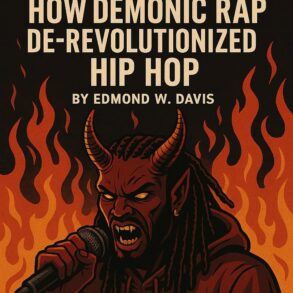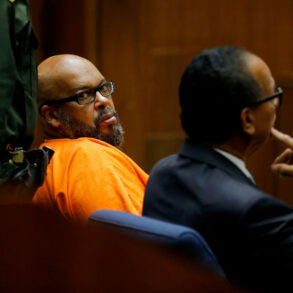
Five decades into their legendary careers, the Sugarhill Gang performed at Nashville’s AB Hillsboro Village, also discussed their legacy’s power.
Hip-hop legends of “Rapper’s Delight” fame, the Sugarhill Gang, performed at Nashville’s intimate AB Hillsboro Village venue.
The still touring touring quartet is four decades removed from an era wherein their songs — including “Apache” and “8th Wonder” — evolved rap from disco and R&B-adjacent party music to burgeoning into a pop-dominant genre of its own regard.
Thus, while performing live on May 9, they did used their rap lyrics to lead the throng of revelers in a call and response. That type of engagement celebrated how well party-ready rap has evolved into timeless music able to be enjoyed by everyone from teenagers carrying milk crates of records into New York City nightclubs to people in Music City enjoying a night on the town just south of Music Row.
Teenage street culture develops into timeless pop artistry
Sugarhill Gang member Guy Anthony “Master Gee” O’Brien is now 62. At 15, he was a native of Teaneck, New Jersey, just over the Hudson River from the South Bronx, where almost a decade prior, another teenager, DJ Kool Herc, hosted a “Back to School” basement party that spawned rap music and hip-hop culture.
“Rap music and hip-hop culture were organic-developing, urban and street-based things that initially grew from people making moves by throwing parties for 50 bucks sometimes,” O’Brien told The Tennessean after the group’s performance. O’Brien is a veteran rapper and DJ, now based in the Washington, D.C. area, where he has a co-founding stake in the National Hip-Hop Museum project.
The rapping? That resulted from people rapping over how DJs looped and extended drum breaks from rock, soul and disco hits. The culture? That happened because young people expanded the parties from basements to street corners, parks and then eventually storefront nightclubs throughout New York City and nearby areas.
Thus, the idea of walking past storefronts on Nashville’s West End and hearing party-starting call and response rhymes booming from inside a restaurant only recently converted into a speakeasy-style nightclub serving Black-owned Uncle Nearest whiskey beverages makes rap’s roots feel more timeless and broader-reaching than ever.
Hip-hop culture, rap music’s legacy still evolving
Keenly aware of being in Nashville, where country and gospel music have roots both well over a century in age, O’Brien notes that hip hop, which just recently turned 50 years old, has a legacy that is still in an infancy by comparison.
However, in the past two decades artists including Drake, Eminem, Rihanna, Snoop Dogg and Kanye West now dominate 40 percent of the list of the biggest selling hip-hop tracks ever thanks to downloading, streaming and a pop crossover surge
None of those performers has roots near the culture’s ancestral New York Area home. Thus, performances like Sugarhill’s Gang in Nashville are essential in ensuring that hip-hop culture and rap music’s roots remain vibrant and vital in the genre’s still-continuing growth.
O’Brien cites artists alongside the Sugarhill Gang including Kurtis Blow, Grandmaster Caz, the Cold Crush Brothers, Grandmaster Flash, the Funky Four + 1 More, Dr. Jeckyll & Mr. Hyde (which included eventual rap executive Andre “Dr. Jeckyll” Harrell) and Whodini as having legacies as songwriters who fostered the core of what evolved into the 21st century’s mega hit-makers that deserve to be recognized to be preserved.
“The naivete that remains about rap music revolves around people still learning that the essence of what rappers do is as folk-style storytellers who write songs about (our culture, life and times),” O’Brien said.
Watch O’Brien, plus fellow 2025-era Sugarhill Gang members Wonder Mike, Hendogg and DJ T-Dynasty (founding member Henry “Big Bank Hank” Jackson died in 2014) perform onstage. Their ability to recall intricate lyrical wordplay nearly a half-century old feels as familiar to things that routinely happen in Nashville as watching the Grand Ole Opry cast perform the Carter Family’s “Will The Circle Be Unbroken.”
‘Rapper’s Delight’
[embedded content]
“‘Rapper’s Delight’ is one of the greatest lifestyle songs ever written,” O’Brien continues.
The group extends into a longer conversation regarding how hip hop ended up in the song because Wonder Mike’s cousin was fond of saying the phrase, “Bang-bang boogie, say up jump the boogie to the rhythm of the boogie, the beat,” and how it suggests that looped percussive drum breaks drive rap songs.
O’Brien adds, that the song’s opening line, “Now what you hear is not a test, I’m rappin’ to the beat,” comes from the introduction of the 1960s era TV program, “The Outer Limits” (“There is nothing wrong with your television set. Do not attempt to adjust the picture”).
The song peaked at number 36 in January 1980 on the Billboard Hot 100 chart and had top-five success on Billboard’s Hot Soul Singles chart. It also achieved top-five global success on multiple charts worldwide, eventually leading to the equivalent of five-time platinum selling acclaim.
“Imagine being 18 years old and (being at the forefront) of a culture and music that, alongside disco and punk rock being popular, are giving a mainstream voice to people who are not used to having that ability to express themselves. Then, rap became as much an element of the mainstream as country, funk, rock and R&B,” O’Brien adds.
The group sits and laughs, recalling how, within five years of the release of “Rapper’s Delight,” acts like Cameo and Chaka Khan, once skittish about rap’s burgeoning, street-based development, embraced it in their respective 1984 hits “She’s Strange” and “I Feel For You.”
Early rap songs crafted to be visionary hits
Over five years, the Sugarhill Gang recorded two dozen songs over four albums. In an era where pop superstars record that many songs for one album alone, there’s something about the art of song-crafting in their development that is worth contemplation.
The group was initially assembled by producer Sylvia Robinson, who founded Sugar Hill Records with her husband, record producer Joe Robinson. Notably, Sylvia succeeded as a performer of the R&B chart-toppers “Love Is Strange” by Mickey & Sylvia (later of “Dirty Dancing” soundtrack fame) and the 1973 solo hit “Pillow Talk.”
Notably too, in the era between those classics, she played guitar on Ike & Tina Turner’s hit 1962 single “It’s Gonna Work Out Fine.”
In 2022, Doug Wimbish, bassist in the Sugar Hill Records band, noted Robinson “knew how to take key elements out of (a song), magnify it, and turn things into a recording.”
“Sylvia was one of the few visionary (executives) already in the record industry system who knew how profitable rap music could be. Because she was also a musician, producer and songwriter, she could help us make other hits, too,” says O’Brien.
‘Rap is everywhere…’
When asking The Sugarhill Gang to encapsulate the impact of their rise, the strength of the metaphors properly highlights how four lucrative decades that dynamically impacted global society occurred.
“Corporations, organizations, people, places, rap is everywhere,” DJ T-Dynasty said. “It doesn’t matter if you’re eating cereal or trying to market toys to kids, television shows (nodding a hat to Alfonso Ribeiro and Will Smith dancing to “Apache” on “Fresh Prince of Bel Air”), everything — if you’re using rap, it sells.”
“‘Rapper’s Delight’ was the shot heard ’round the world that served as a launching pad for ‘Neil Armstrong walking on the moon’-type of success,” O’Brien said. “That led to ‘8th Wonder,’ which allowed us to continue to break out with a signature sound. Then, ‘Apache’ evolved our group and developed our legacy.”
This post was originally published on this site be sure to check out more of their content.







